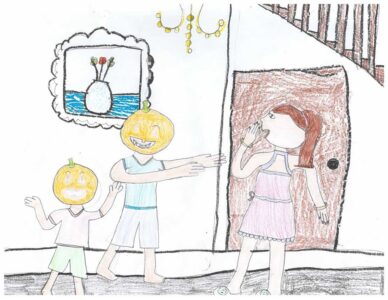Know Before You Grow: Why are there berries on my potatoes?
I have been receiving questions from many shocked gardeners this season about their potatoes. These questions are not just from new or beginner gardeners, but experienced green thumbs who have been gardening for years! The question: “why are my potatoes producing small cherry-like fruit?” Usually followed up with, “I’ve been growing potatoes for years and I have never ever seen this before!”
Gardeners are surprised to see these little green berries, resembling unripe cherry tomatoes, growing on potatoes. Like tomatoes, potatoes are in the Nightshade or Solanaceous family. Potatoes closely resemble tomatoes than other family members, which include peppers and eggplants. Because of this close resemblance, it’s no surprise the fruit of the potato plant closely resembles the fruit of a cherry tomato plant.
But why are potato plants producing fruits this season compared to years past? The answer is the environment; more specifically, the weather! This year’s unseasonably cooler weather we experienced earlier in the growing season is responsible for the potato fruit being seen now. Potato flowers look very much like tomato flowers except instead of being yellow, the potato flowers can be white, lavender (purple), or pink, depending on the type of potato. Most years these beautiful little flowers fall off the plants and never have the opportunity to go from flower to fruit. The cool weather with adequate rain allowed the flowers to remain, pollinate, and grow into small potato fruit. These fruits are known as seed balls, potato apples, potato tomatoes, or simply as berries.
Unlike cherry tomatoes, potato berries are NOT edible, but rather poisonous. They contain high amounts of solanine that can make the devourer very sick. Symptoms of poisoning are headache, abdominal pain, shock, and diarrhea. If little kids are present, it is a good idea to remove the fruit so the children are not tempted to eat them.
However, you can save the seeds to grow potatoes for next year but be aware that you will NOT get the same kind of potatoes as the parent plant. Professional potato plant breeders tend to locate potato fields in cooler climates, such as Idaho and Wisconsin, to facilitate hybridization and fruit production. The seeds that form inside the fruit as it ripens are then grown out to evaluate the new plant. For production of the tubers that we eat, a particular hybrid that has disease-resistance or high yields is propagated through pieces of the underground tubers. This type of propagation assures that those desired qualities of the hybrid are preserved, since hybrid plants rarely reproduce true from seed.
About the Author:
Marcus McCartney is the OSU Extension Agriculture and Natural Resources Educator for Washington County. He has been with extension since 2014. Marcus received both his bachelor’s and master’s degrees from West Virginia University.






